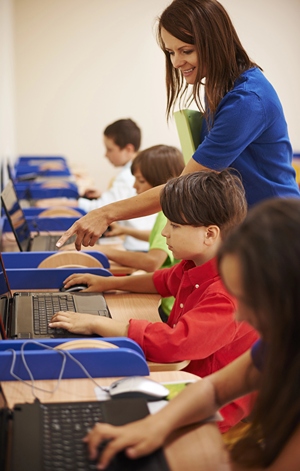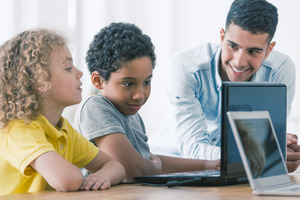The Role of Digital Platforms in Teaching Kids Empathy and Collaboration
Children today are growing up with unprecedented access to technology and digital platforms. While screen time often gets a bad reputation, another side to the story highlights the positive impact of certain digital environments. Online games, apps, and social platforms can potentially teach children essential life skills, particularly in empathy and collaboration.
As children interact in virtual spaces, they learn how to connect with others, solve problems together, and develop emotional intelligence, all of which are invaluable in their personal and future professional lives.
Why Empathy and Collaboration Matter
Before diving into how digital platforms are shaping these skills, it’s important to understand why empathy and collaboration are crucial for children’s development. Empathy helps kids understand and share the feelings of others, fostering strong relationships and emotional resilience. Collaboration, on the other hand, teaches them how to work with others, respect differing perspectives, and achieve common goals. Together, these skills are foundational to a child’s social and emotional well-being.
In a world where group projects, teamwork, and communication are increasingly important, learning these skills early on can set kids up for long-term success. Empathy and collaboration don’t just improve their social interactions; they also contribute to a child’s ability to think critically, solve problems, and thrive in a diverse environment.
How Digital Platforms Promote Empathy
While it might seem counterintuitive to associate empathy with digital spaces, several platforms are designed specifically to encourage children to put themselves in others’ shoes. Many games and apps offer experiences where children must navigate complex social scenarios, make decisions that affect other characters, and manage the outcomes of their actions.
For example, some video games place players in roles where they must care for others or solve problems for characters they encounter. These situations allow children to practice empathy in a controlled environment, allowing them to see the impact of their decisions and grow emotionally. Role-playing games, in particular, require players to consider others’ feelings and perspectives, teaching them to weigh their actions thoughtfully.
Additionally, certain social media platforms aimed at younger users create opportunities for kids to connect with others across the globe. These platforms encourage sharing and understanding diverse experiences, opening children’s minds to different cultures and lifestyles. When kids interact with peers who have varying backgrounds, they develop a deeper understanding of the world and cultivate empathy for those who might be different from them.
Digital Collaboration: Learning Through Teamwork
Collaboration is another key area where digital platforms excel in helping children develop essential skills. Many games and apps emphasize teamwork and cooperation, requiring players to work together to achieve a common goal. Whether it’s a multiplayer game where success depends on strategic collaboration or an educational app that promotes group problem-solving, these platforms encourage children to communicate and cooperate effectively.
For instance, multiplayer online games often assign players to teams, with each person responsible for contributing a unique skill to succeed. Children learn to rely on each other, share information, and coordinate their efforts to overcome challenges. This type of collaboration mirrors real-world teamwork, where success often depends on the ability to work harmoniously with others toward a shared objective.
Moreover, these digital environments also teach children to resolve conflicts constructively. As with any team setting, disagreements or differing opinions can arise. By participating in online games that require collaboration, kids learn valuable conflict-resolution skills, such as compromise and negotiation, in order to keep the team moving forward.
Gamification and Its Role in Digital Literacy
In addition to empathy and collaboration, digital platforms also provide opportunities for children to develop other essential skills, such as digital literacy. Games can help with digital literacy by introducing children to technology in a fun and engaging way. As kids navigate digital environments, they become more comfortable with using technology, understanding interfaces, and even picking up basic coding and problem-solving skills.
Gamification, which involves applying game-like elements to educational or real-world tasks, can make learning about technology both accessible and enjoyable for kids. Many apps and games incorporate digital literacy elements, from puzzle-solving challenges to coding tutorials, blending entertainment with education. By fostering a love for technology and learning, these platforms equip children with skills that will serve them well in a rapidly advancing digital world.
Striking a Balance: Encouraging Healthy Digital Habits
While it’s clear that digital platforms can be valuable tools for teaching empathy, collaboration, and digital literacy, it’s essential to strike a balance between screen time and other activities. Parents and educators play a crucial role in guiding children to use digital platforms responsibly, ensuring that online time is spent on meaningful, skill-building experiences.
Setting boundaries around screen time and choosing age-appropriate platforms that emphasize educational content can help children reap the benefits of technology without falling into the trap of passive entertainment. Encouraging kids to reflect on their experiences and discuss what they’ve learned in their digital interactions can also reinforce the skills they’ve developed online.
Preparing Kids for the Future: Building Digital and Emotional Intelligence
As technology continues to evolve, it’s more important than ever for children to develop the skills necessary to navigate the digital landscape. Platforms that foster empathy, collaboration, and digital literacy are equipping kids with the tools they need to succeed in a tech-driven world. But beyond technology, these platforms are also helping to build emotional intelligence—a skill that will serve children throughout their lives, both online and offline.
By engaging in these digital environments, kids learn not only how to work with others and understand different perspectives but also how to communicate effectively and think critically. These are the same skills they’ll need to tackle future challenges in school, the workplace, and everyday life. With the right guidance and balance, digital platforms can serve as powerful resources in preparing children for a future where emotional and digital intelligence go hand-in-hand.
Nurturing Empathy and Teamwork for Lifelong Success
Incorporating technology into a child’s learning journey doesn’t mean sacrificing traditional values like empathy and teamwork. In fact, the opposite can be true. With the right platforms, digital environments can be used to nurture these important life skills, helping children grow into compassionate, collaborative, and digitally literate individuals. As parents and educators, supporting children’s use of these platforms responsibly can open up new avenues for growth, setting them on a path toward lifelong success.












